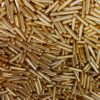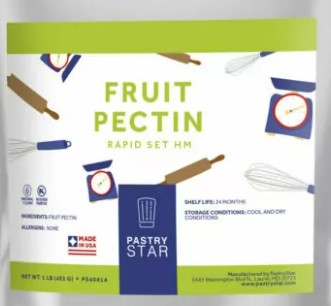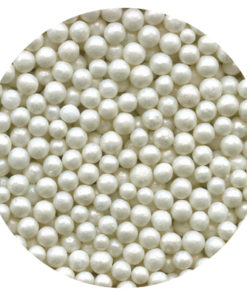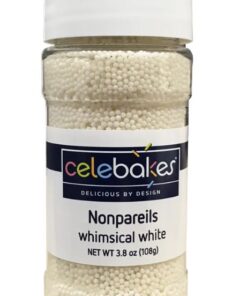CAD $10.70
Apple based NH pectin is a reversible pectin for making Jams and Jelly.
Brand: Pastry Star
Ingredients: Fruit pectin HM, corn syrup solids
Allergens: None
Pack Size: 50g
Out of stock
Description
Pectin is a polysacharide found in the cell walls of plants. There are two main divisions of pectin used in cooking: high methoxyl (HM) and low methoxyl (LM). There are also fast and slow setting variants.
The high methoxyl is used in most jam and jelly recipes. It requires sugar and acid to gel. When the pectin is dissolved out of the cell walls it is very dilute and picks up a negative charge that prevents the molecules from binding to each other and gelling. Adding sugar isolates the pectin molecules from some of the water while adding the acid removes their charge.
Pectin HM is thermally reversible, which means it can be set, melted, and set again.
Instead of using sugar and acid to encourage gelling, low methoxyl pectin gels in the presence of calcium. It is used in glazes and reduced sugar jams. It is not thermally reversible.
Pectin NH is a type of LM pectin that has been modified to set without the need for much calcium (pectin NH gels with calcium but unlike other LM pectins it requires much less calcium). Because there is less calcium in the gel, pectin NH is thermally reversible. The recipes that I have seen that use pectin NH both have less sugar and require remolding.
Pectin NH tends to be more expensive. It is typically used in low-sugar pastry fillings and glazes.
http://blog.ideasinfood.com/ideas_in_food/2008/02/a-brief-overvie.html
https://modernistpantry.com/products/nh-pectin.html
Additional information
| Weight | .1 lbs |
|---|---|
| Dimensions | 4 × 2 × 6 in |
Related products
Ingredients
Ingredients
Ingredients









